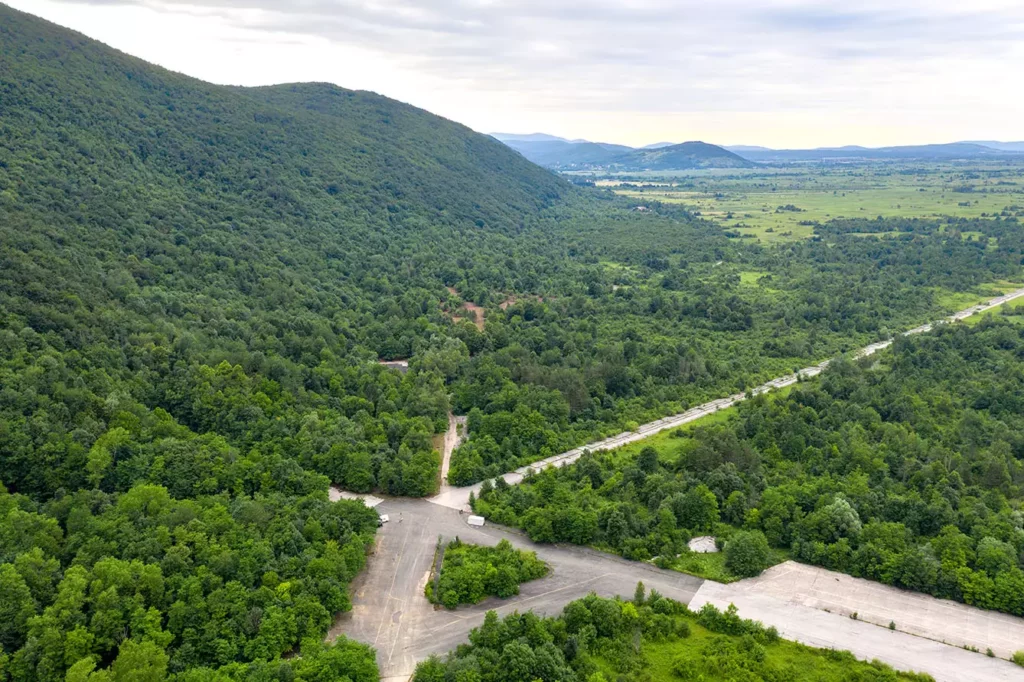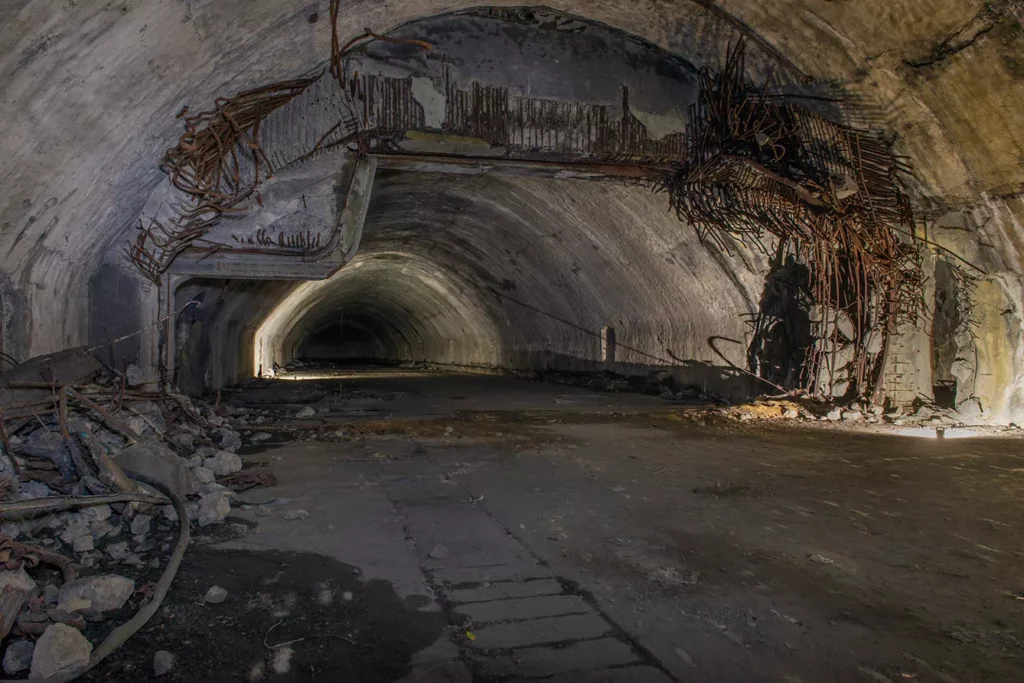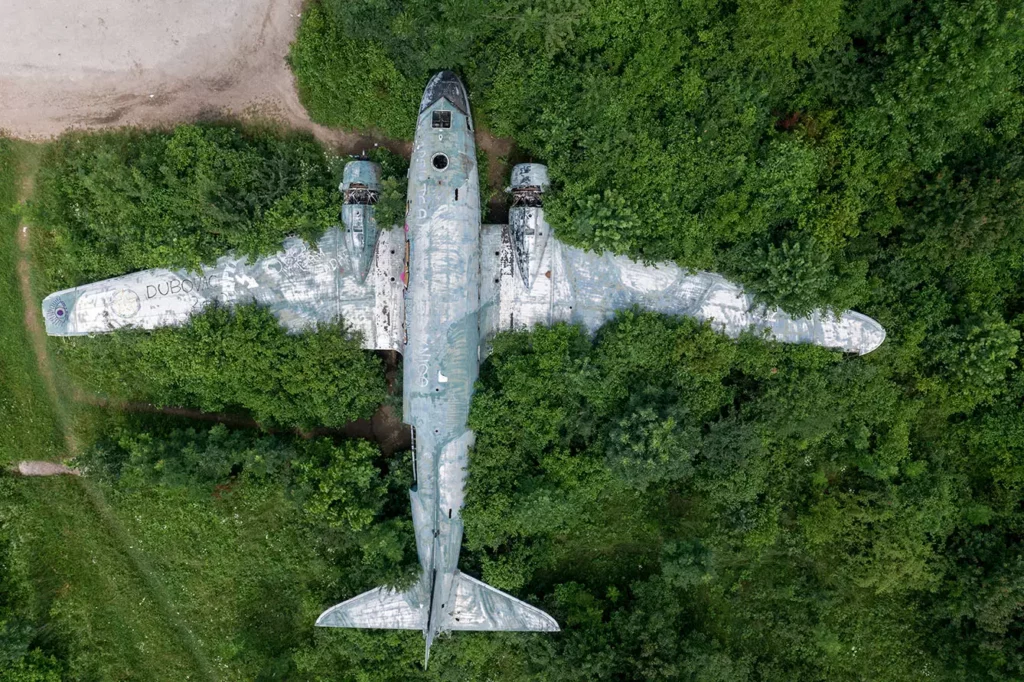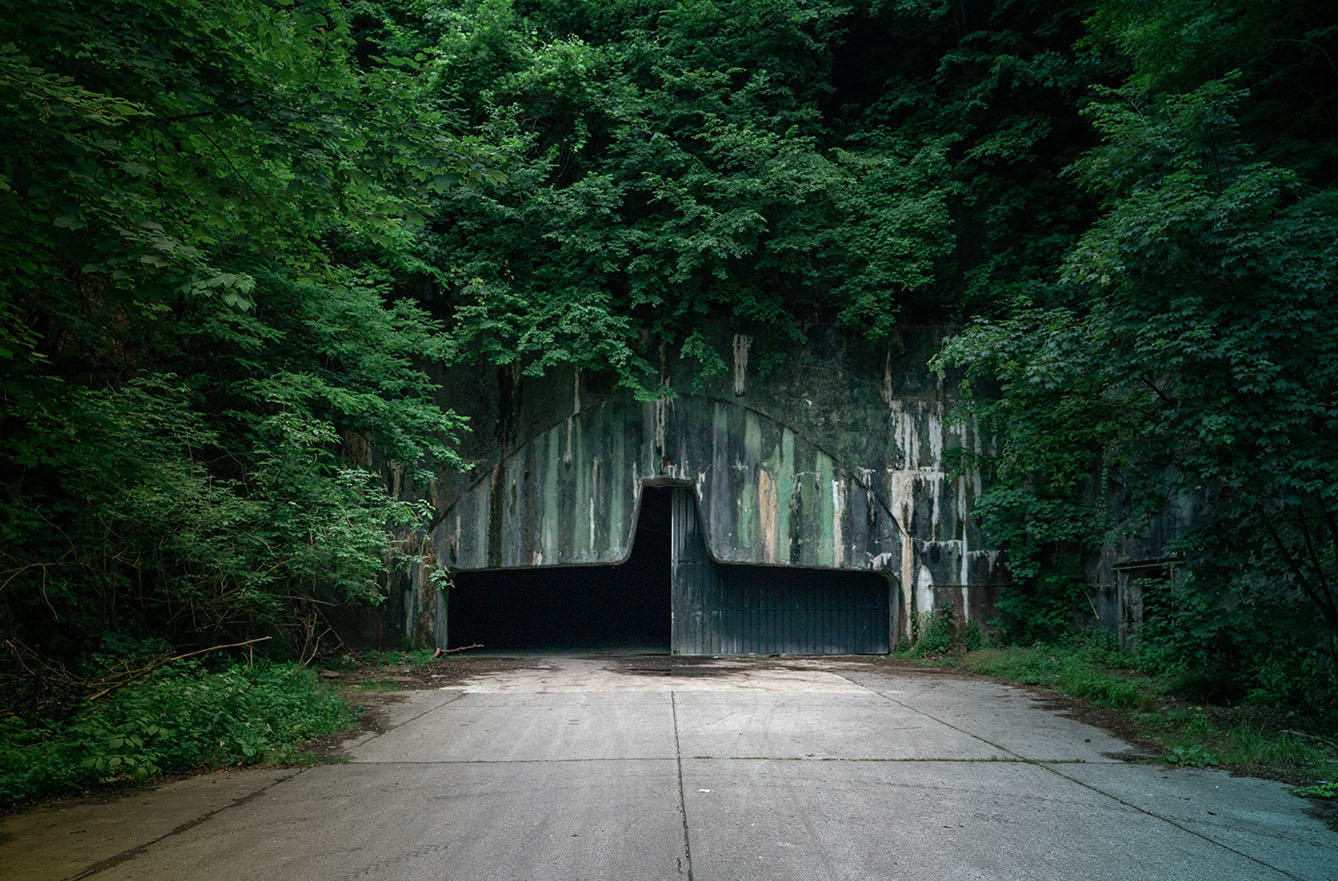When a plane runs through a wall or a window in a cartoon, it usually leaves a hole in the shape of the aircraft itself: spread wings and one vertical slot for the stabilizer. Maybe, then, it took a cartoonist’s imagination to invent the iconic gate to Željava Air Base, an underground infrastructure in present-day Croatia capable of housing and starting planes directly from underground?
Željava: dangerous, forbidden, tempting
Although the whole concept of an underground airbase sounds very sci-fi, such bases were not only conceived of but actually built in the eastern bloc. The largest of them was in former Yugoslavia, on the current border between two of its successors – Croatia and Bosnia and Herzegowina. Abandoned, a bit dangerous, and partially forbidden, it’s still possible to visit.



Officially known as Obiekat 505, it is located under Plješevica Mountain. One of the largest of such facilities in Europe, it could house two hunter squadrons and one thousand people, including military commanders. It could be sealed off in case of emergency, had independent water and energy sources, and could resist even a nuclear attack similar to the one executed on Nagasaki.
Abandoned airbase on EU frontline
The strategic goal of the complex was to house a long-range early warning radar system and be capable of preventing any danger that the device could register. It was constructed at a time when such threats from the West were considered very serious. Built between 1957 and 1965, construction costs amounted to an immense USD 6 bln. Needless to say, it was built in secrecy, which added to the difficulty of the project.
Though largely destroyed by the Yugoslav National Army while retreating from Croatia during the Croatian War of Independence, it still played a part in the brutal 1990s history. In 1991, just before the war broke out, Rudolf Perešin, a fighter pilot for the Yugoslav Air Force, escaped the base and made it to Klagenfurt in Austria, defecting to the Croatian side. Less than one year later, another pilot, Daniel Borović, also managed to defect with his supersonic jet, landing at Zagreb Airport.
Currently, the Željava airbase is on the border of the European Union. Though technically accessible, visiting may require a permit from local police to avoid suspicion. Visitors should also be aware of several dangers, such as radiation, but especially mines and unexploded munitions. It is said that Croatian police now use the facility to train K-9 dogs in finding explosives.







